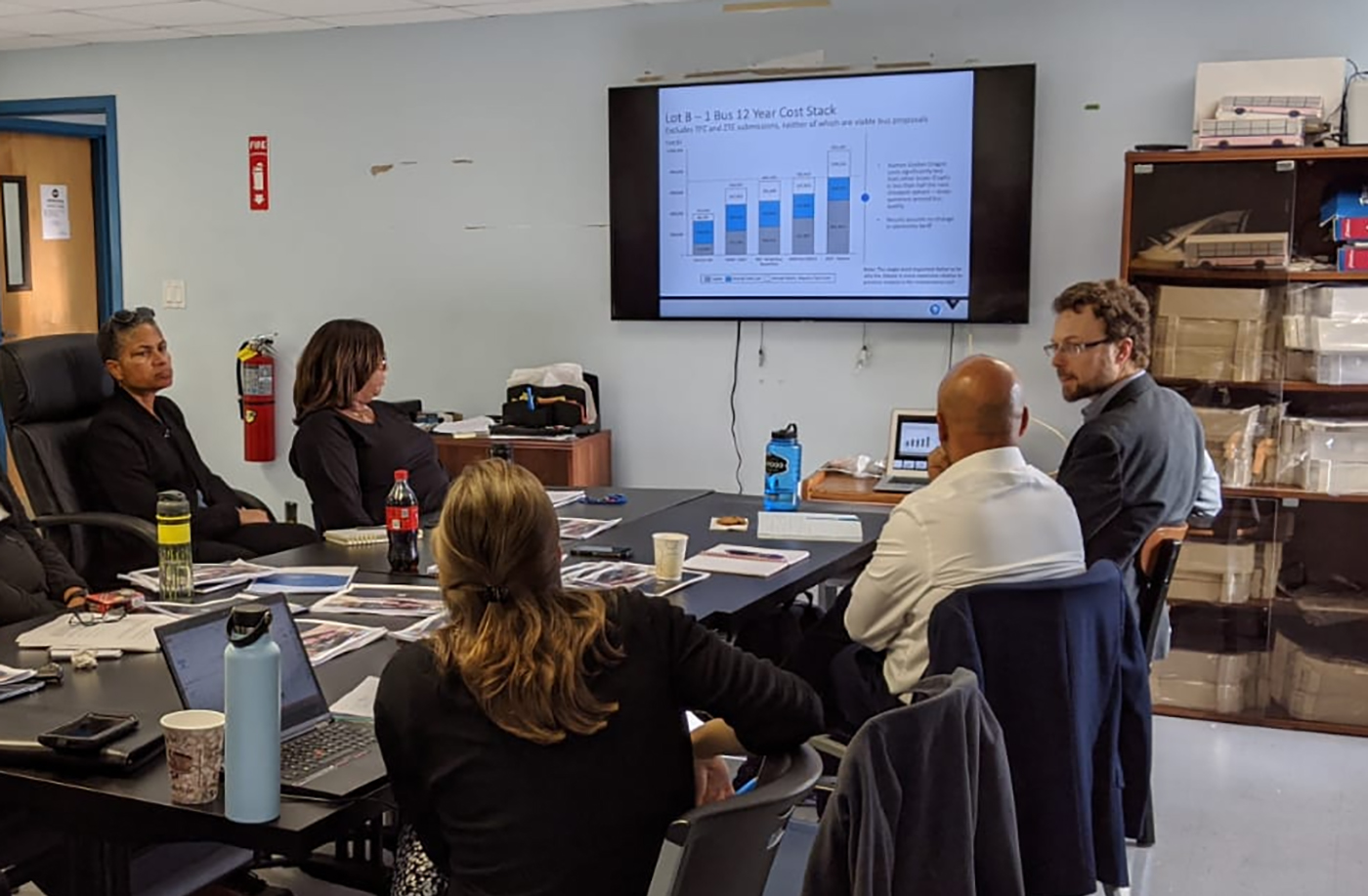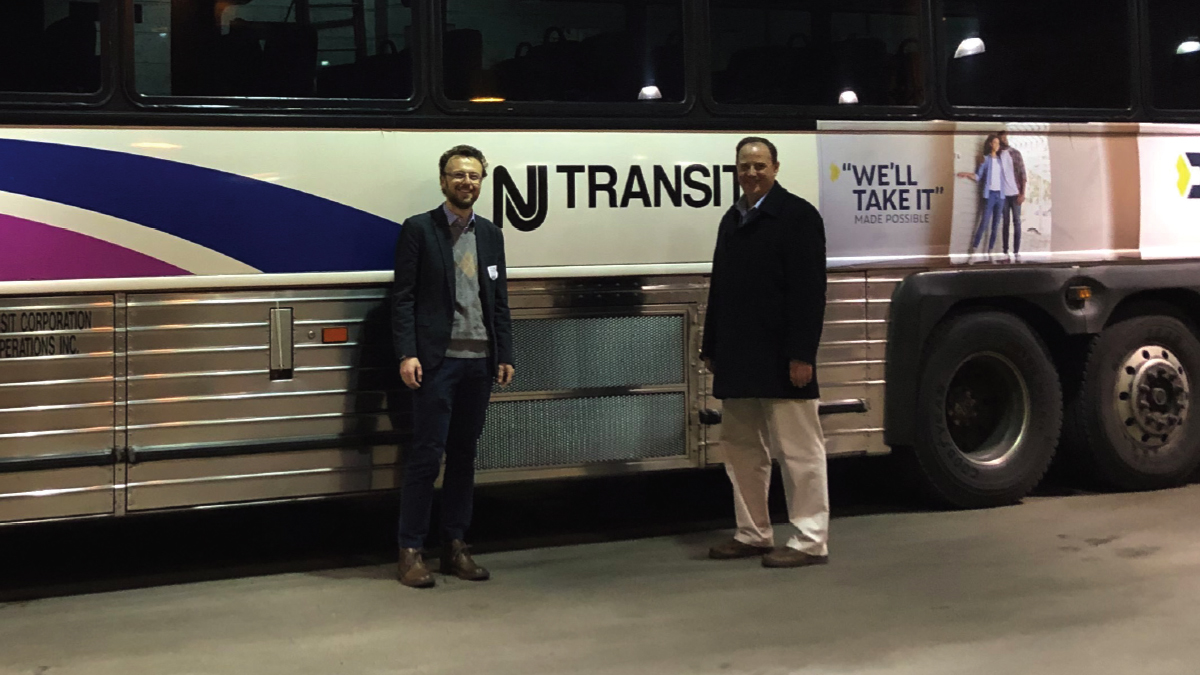career of the month
Sustainable Mobility Expert E.J. Klock-McCook
Sustainable mobility experts perform analysis and design work and also recommend policies intended to make transportation systems more efficient and more reliant on renewable energy. E.J. Klock-McCook is a sustainable mobility expert with Rocky Mountain Institute in Boulder, Colorado, where he works on a range of projects that are intended to accelerate the de-carbonization of transportation systems in the United States and globally.
Work overview
We’re trying to solve technological, economic, and regulatory challenges in order to encourage widespread adoption of personal electric vehicles. A second focus is electrification of vehicle fleets, such as those used for public transportation and freight systems.
I am responsible for teams working on a range of projects in these areas. We have weekly team check-ins to discuss hurdles that need to be overcome and what we want to accomplish next. Communications and messaging are a big part of what I do. I have a lot of interaction with the people who fund our work, and manage some of those relationships. I also handle the budgeting, hiring, and other associated administrative work.
At its base, what we do is problem solving. We look at seemingly unconnected economic, technical, and other data sets to derive insights. Developing the insights and recommendations requires an understanding of how the electric utility system works, how electric vehicles work, how the vehicles impact the electrical grid, and so on.
On a good day, it feels like we’re going out to save the world, and that feels great. I’m also never stuck at a desk—I go to a lot of meetings internally, and travel to meet interesting people such as CEOs, mayors, and members of Congress. The administrative part of the work is necessary but not so much fun.
Career highlights
At my last job, we spent several years designing a component for an advanced Air Force application. Eventually it was fabricated and tested in an arc jet, which recreates the conditions of high-speed, high-altitude flight by essentially creating a stable lightning bolt and flowing gas through it. The measured temperatures on the prototype were within a couple percent of what my model had predicted. It was very exciting and nerve-wracking at the same time.
At RMI, we recently gathered about 80 people representing electric utilities, cities, states, mobility providers, and other organizations from around the country to work together toward clean, equitable, and safe mobility options. The four-day workshop was a big success.
Career path
I enjoyed science and math growing up. I chose to study mechanical engineering in college because I liked its practical and applied nature. I then continued on to graduate school in the same field. The University of Washington had a lot of research funds for aerospace with Boeing so close by, so I ended up focusing on that. I did an internship at the Boeing plant and researched manufacturing techniques for the Boeing 787.
After graduation, my first full-time job involved designing weather satellites for Lockheed Martin. The work was interesting, but it is a gigantic company, and I felt like a tiny cog in a gargantuan machine. I then went to work at a small company of less than 30 people that specialized in the design of high-temperature composite materials used in challenging environments, such as rocket nozzles and jet engines. As my understanding and concern over climate change increased, and as my work moved in the direction of more military-related projects, the job no longer resonated with me. I decided that I wanted to work on sustainability. I learned of the Rocky Mountain Institute through a personal connection and went to work there.
Knowledge, skills, and training needed
First and foremost, you need to be able to solve problems and analyze data in highly ambiguous environments. Business and financial acumen are also needed, so you can build a business case for a proposed approach. This work requires changing people’s perceptions, attitudes, and behavior, and even the best spreadsheet or model can’t do that. So you have to be able to translate analytical insights into compelling stories that everyday people can understand. And you have to be able to work collaboratively in diverse teams.
Advice for students
Develop your communication skills. Beginning with Lockheed Martin, I saw that engineers who were able to communicate (even internally to project teams) had a more powerful effect. Start building your network in your field of interest. Look for opportunities to attend conferences with your college professor, and join pertinent clubs (whether school clubs or professional societies). Poke around on LinkedIn, and see what paths people took to get to interesting jobs. Strategically pick internships with networking and resume-building potential, as well as real-life experience.
A lot of people come into this work with engineering backgrounds, and graduate degrees in subjects like sustainability or clean energy. But there are other paths too. Sustainable energy is a broad field, so find the type of work that resonates with you, and follow your heart—the last thing you want to be doing is something that makes you miserable.

Discussing the technical and economic merits of electric buses for Bermuda. Photo by Kaitlyn Bunker.
Bonus points
Klock-McCook’s education: BS in mechanical engineering, Villanova University; MS in mechanical engineering, University of Washington.
Websites:
Related Careers: Sustainable-energy finance, business, research, big data, policy.
Careers Engineering High School



